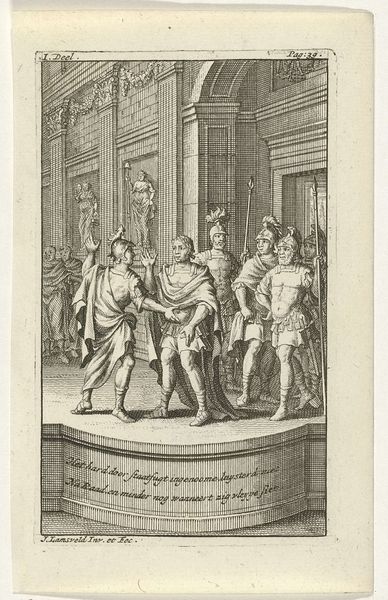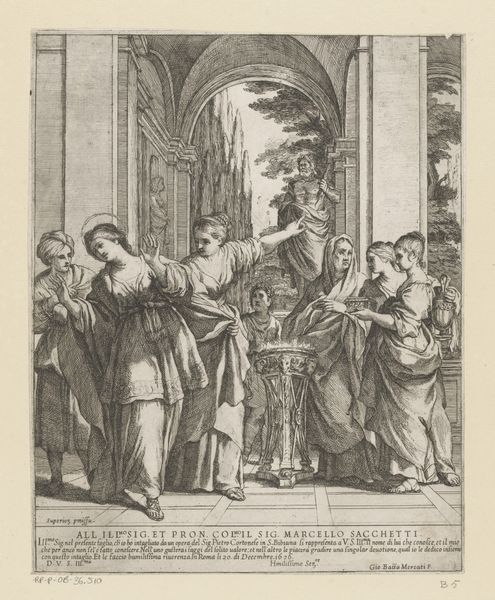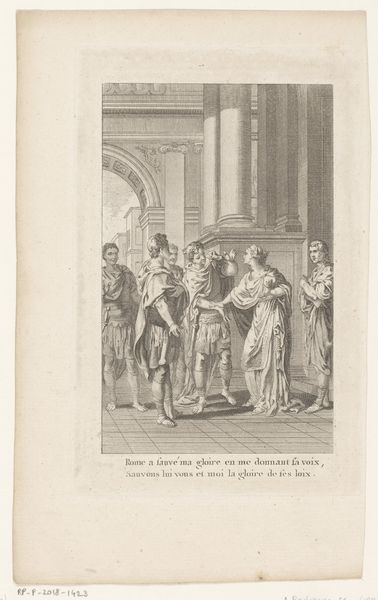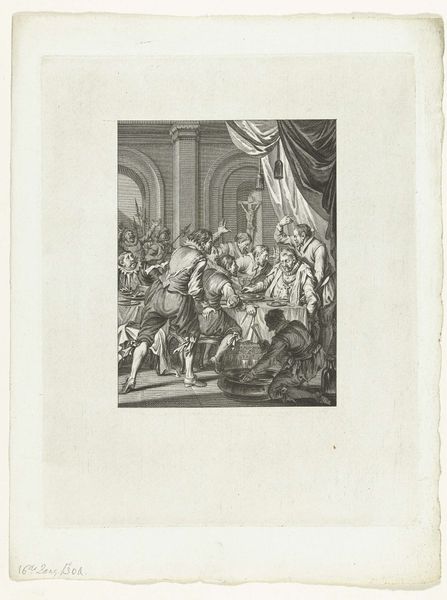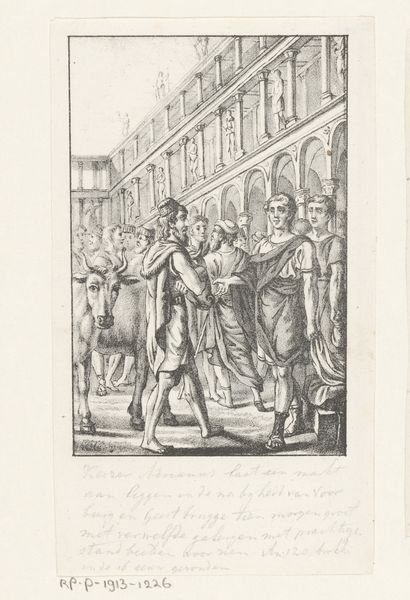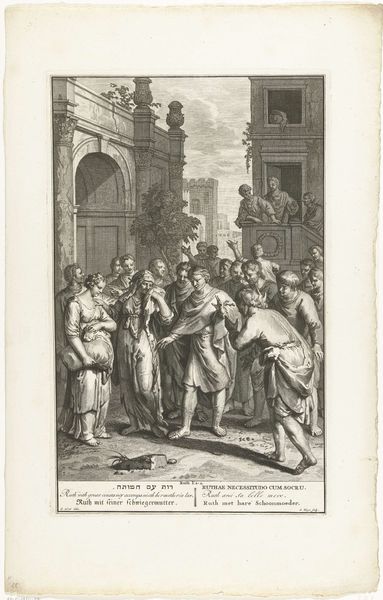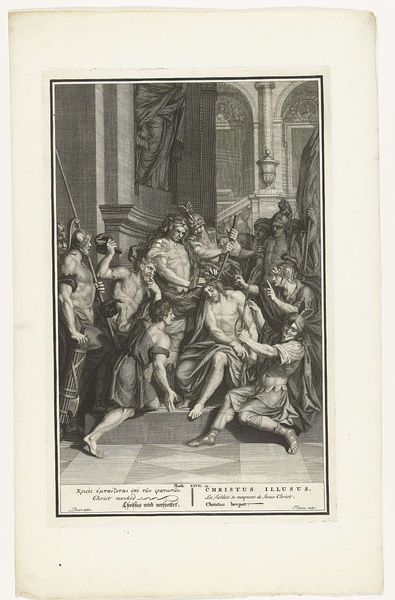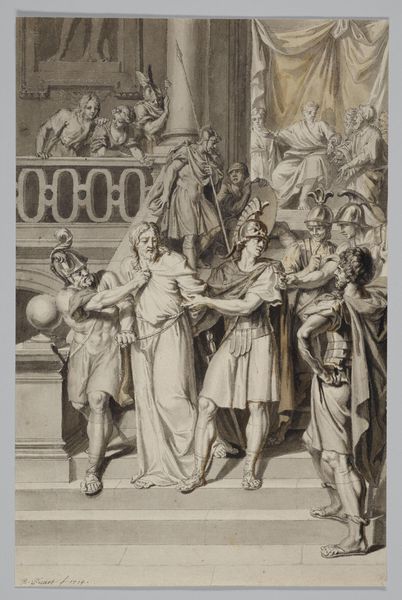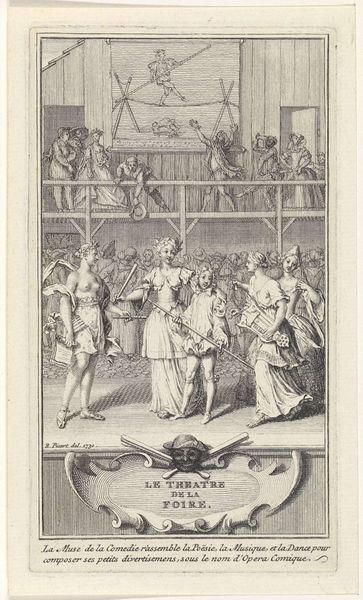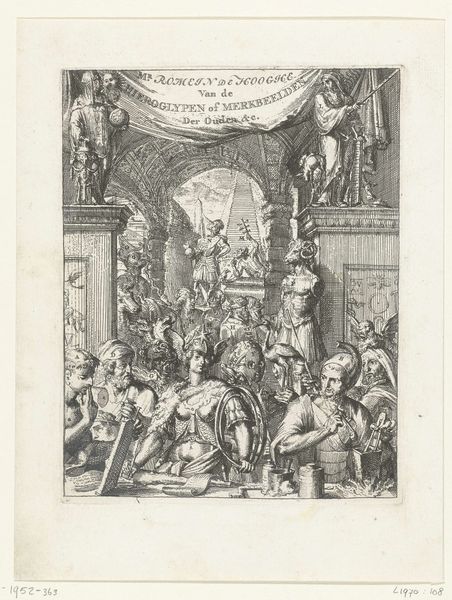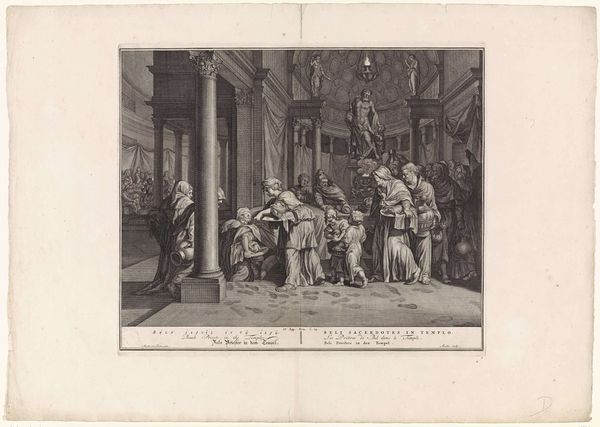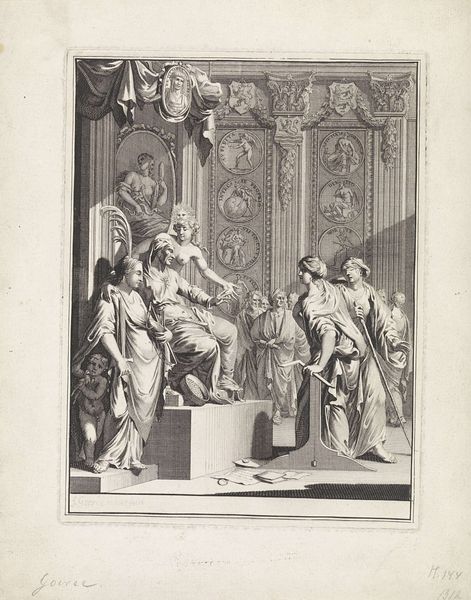
print, engraving
#
baroque
# print
#
figuration
#
history-painting
#
engraving
Dimensions: height 365 mm, width 230 mm
Copyright: Rijks Museum: Open Domain
Curator: The somber mood of this image strikes me immediately. A subdued scene of Christ being returned to Pilate. Editor: Indeed. Here, we have "Christus wordt teruggestuurd naar Pilatus," an engraving created around the 1710s by Andries van Buysen, now held at the Rijksmuseum. Note the strategic use of line and space, producing the clear structure of Baroque printmaking, isn’t it remarkable? Curator: Absolutely. And it evokes so much cultural context through carefully rendered symbols. Observe the powerful visual metaphor: Christ, in shackles, signifying not just his physical captivity, but also the constraints placed upon spiritual truth. Editor: Precisely, note the engraver's ability to create textural differences purely through the variation in hatching and cross-hatching, most pronounced in the robes and the architecture. How do you respond to these choices? Curator: They bring focus and gravity. Consider Pilate, presented here as both judge and spectator, a classic representation of indifference, echoing the power structures in play. Notice the architecture? Its solidity a testament to empire juxtaposed to the humanity on the steps below. Editor: Quite true. It also reflects Baroque aesthetics’ commitment to dramatic action within confined settings. Consider the implied movement through the frame achieved only with precise and repetitive diagonal marks. Curator: I find compelling, too, the visual narrative created by contrasting light and dark—casting shadows where perhaps innocence ought to stand. And that placement: dead-center for the light of enlightenment amid corruption and doubt. It’s heavy-handed but incredibly potent for its audience, given this would have served as visual theology, in some cases. Editor: And a rather fascinating testament to Buysen’s command of form and subject. The semiotics of each Roman’s garments are not to be passed by as they clearly distinguish each characters rank within the image. It adds so many elements within what may seem like a rudimentary engraving at first glance. Curator: Indeed, we have unraveled quite the depth and layers of this baroque piece. It brings the scene to life with remarkable vividness given the context of what a "print" offers. Editor: It’s quite a feat that this artwork distills not only a historical event, but enduring cultural anxieties surrounding judgment and redemption into such compact, yet deeply expressive space.
Comments
No comments
Be the first to comment and join the conversation on the ultimate creative platform.
